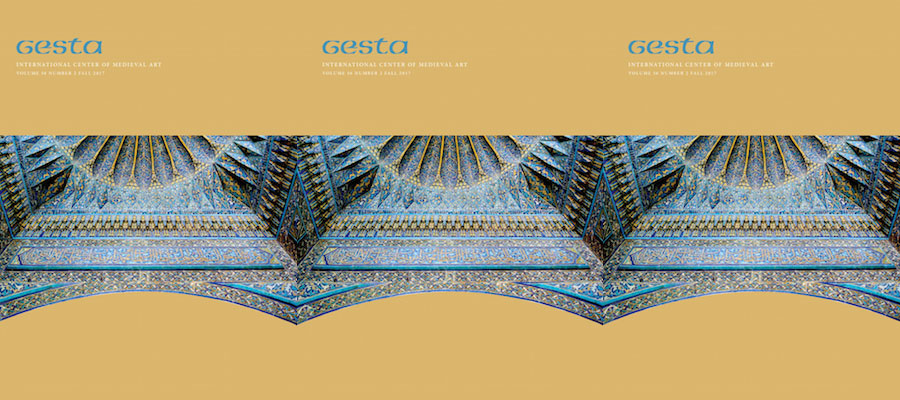Gesta, volume 56, number 2 (Fall 2017).
CONTENTS INCLUDE
Encounter: Reflections on the Wall Mosaics in the Eufrasiana
Henry Maguire
Viewing the Unknown in Eighth-Century Constantinople
Paroma Chatterjee
This article discusses the value of unknown monuments as construed by the Parastaseis Syntomoi Chronikai, a catalogue of the monuments of Constantinople compiled, according to some scholars, in the eighth century. I contend that the Parastaseis imagines the topography of Constantinople as one composed of nodes of the unknown. I further argue that these unknown spaces and monuments articulated the city’s links to its ancient—if forgotten—past and thus played a critical role as markers of urban and historical continuity. In particular, ancient statues were associated with the longevity of the Byzantine Empire in a way that holy icons were not, because the former had never been subjected to the atrocities and debates regarding their validity that the latter had during Iconoclasm.
Translatio and Objecthood: The Cultural Agendas of Two Greek Manuscripts at Saint-Denis
Cecily J. Hilsdale
In tracing the histories of two Greek copies of the complete works attributed to Dionysios the Areopagite, known as the Corpus Dionysiacum, this article considers the kind of agency exerted by medieval books as distinct from other art objects mobilized in the cross-cultural diplomatic arena. An examination of the entangled social lives of these two Byzantine books sent from Constantinople to the abbey of Saint-Denis outside Paris as imperial gifts in the ninth and fifteenth centuries reveals their transformation over time as objects of translatio akin to sacred relics in the negotiation of political, hagiographic, and humanistic agendas, and, further, in the cultivation of medieval patrimony in the service of medieval kingship and modern statehood.
